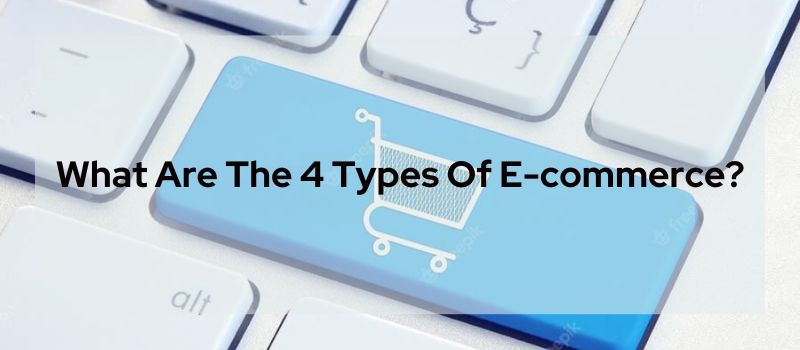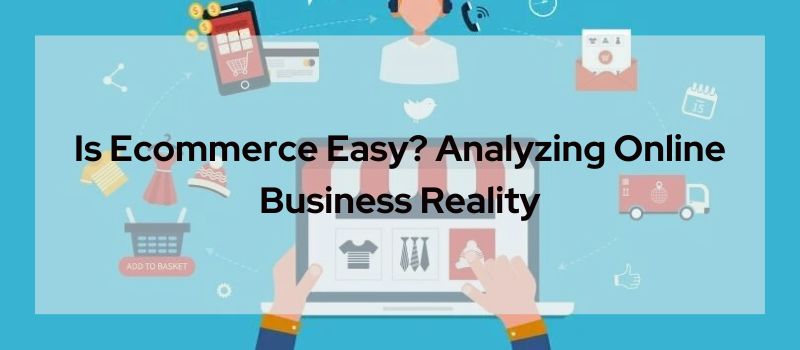Are you starting an e-commerce business and looking for the perfect products to sell? Sourcing high-quality, unique products is crucial for any successful online store. However, finding reliable suppliers and manufacturers takes time and effort.
In this article, I’ll share my tips as an ecommerce entrepreneur on strategically sourcing great products for your inventory.
Contents
- 0.1 How to Source Products to Sell on an Ecommerce Store
- 0.2 The Step-by-Step Process of Starting an Ecommerce Business
- 0.2.1 Choose a Business Structure
- 0.2.2 Select a Product Niche
- 0.2.3 Research Competitors
- 0.2.4 Source Products
- 0.2.5 Set Up a Website
- 0.2.6 Pick a Brand Name and Style
- 0.2.7 Configure Shipping and Fulfillment
- 0.2.8 Process Payments Securely
- 0.2.9 Account for Taxes
- 0.2.10 Market Your Store
- 0.2.11 Provide Excellent Customer Service
- 0.2.12 Analyze Performance
- 0.3 Conduct Market Research to Identify Product Opportunities
- 0.4 Find Reliable Suppliers and Manufacturers
- 0.5 Evaluate Potential Suppliers
- 0.6 Negotiate Prices and Payment Terms
- 0.7 Validate Product Samples and Production Quality
- 0.8 Manage Logistics and Shipping
- 0.9 Build Relationships with Suppliers
- 0.10 Stay on Top of Trends and New Sources
- 0.11 Where can I find a good sourcing agent?
- 0.12 What companies don’t need suppliers (self-supplied)?
- 0.13 Can I buy products on wholesale for personal use?
- 0.14 FAQ’s
- 0.14.1 Q1: How do I find suppliers for my ecommerce business?
- 0.14.2 Q2: What should I look for when choosing product suppliers?
- 0.14.3 Q3: How to confirm product quality from suppliers?
- 0.14.4 Q4: Should I use a sourcing agent to find suppliers?
- 0.14.5 Q5: What questions to ask potential new suppliers?
- 0.14.6 Q6: How do you get the best deals from product suppliers?
- 1 Conclusion
How to Source Products to Sell on an Ecommerce Store
Sourcing great products takes effort but pays off big! Start by understanding your customers and market trends to identify what will sell. Find quality suppliers through platforms like Alibaba or recommendations from fellow sellers.
Build trusted relationships with suppliers through clear communication and collaboration. 1st, we consider the source product guide. Let us discuss the nature of product sources and how we process a starting ecommerce business.

The Step-by-Step Process of Starting an Ecommerce Business
Starting an online store can be daunting, but breaking it down into clear steps makes it much more manageable. Here’s a walkthrough of the end-to-end process based on my own experience getting a profitable ecommerce site up and running:
Choose a Business Structure
First, decide if you’ll operate as a sole proprietorship, LLC, S corporation, etc. Each structure has different legal and tax implications. I’d likely start as a sole prop for simplicity for small new businesses. However, talk to an accountant or lawyer to understand the pros and cons of each model.
Select a Product Niche
Pick an area you’re genuinely passionate about that fits your skills. Use Google Trends and Amazon’s category best-seller lists to identify in-demand niches. Make sure you have a clear target customer in mind, too. I chose yoga equipment since I’m an avid yogi who understands that market well.
Research Competitors
Examine other ecommerce sites in your niche to learn what’s working. Analyze their product selection, branding, pricing, and site experience. Identify gaps or areas you can improve on.
For example, a few yoga sites sold high-quality yoga apparel—that became my focus.
Source Products
Finding reliable suppliers is key. Use Alibaba or source locally. Get samples to ensure quality first. Negotiate minimum order quantities that are realistic for your budget. I started with 50 yoga mats from one overseas supplier to test demand before scaling up.
Set Up a Website
Choose a platform like Shopify or WooCommerce to quickly launch your site. Invest in great images, product descriptions, and easy navigation. Make mobile responsiveness a priority. I hired a contractor on Upwork to customize my Shopify theme.
Pick a Brand Name and Style
Choose a memorable but simple brand name and have a logo designed. Decide on the look and voice that represents your brand. Get any trademarks needed. I chose “FlexLife” as my name with an urban, minimalist style.
Configure Shipping and Fulfillment
Offer customers fast, affordable shipping options. I use Shippo to compare USPS and UPS rates. Also, consider warehouse fulfilment services to store and ship products for you. I fulfil orders myself initially.
Process Payments Securely
Choose a merchant processor like Stripe to accept credit cards. Make sure your site is PCI compliant. Offer alternate payment methods – I use PayPal and “buy now pay later”.
Account for Taxes
Talk to an accountant about getting a sales tax permit and filing business taxes appropriately. Using tax software like TurboTax helps manage it all. Keep diligent records right from the start.
Market Your Store
Create social media accounts to build awareness. Run online ads through Google and Facebook. Reach out to influencers to promote your brand. Offer promotions like free shipping and coupons to incentivize first purchases. It takes continual testing and optimization.
Provide Excellent Customer Service
Make sure customers have a great experience pre and post-purchase. Be responsive to questions and resolve any issues quickly. Follow up with customers for feedback on how you can improve. These personal touches set you apart.
Analyze Performance
Use ecommerce analytics tools to understand traffic sources, sales volumes, conversion rates, etc. Identify best-selling items and opportunities to improve. Tweak low-performing areas based on data insights.

Conduct Market Research to Identify Product Opportunities
Before reaching out to any suppliers, it’s important to understand your target market and identify product gaps or opportunities. Here are a few smart ways to conduct market research:
Use tools like Google Trends to find rising searches and interest
Google Trends is free and gives you incredible data on search volume and interest over time for keywords. You can identify if interest in a particular product niche is rising or declining. Search for generic keywords like “yoga mat” and longer phrases like “extra thick non-slip yoga mat.” Look for upward trends and new popular search terms.
Analyze competitor sites to see the top products in your niche.
Study what products your competitors are selling and how they are marketing them. Are there any gaps in their catalogue you can fill? Look for their top sellers and read product reviews to understand what aspects customers love or want improved. For example, many yoga mat sellers lack good-quality mats for hot yoga—that’s an opportunity!
Check industry data and reports for product trends and forecasts.
Market research firms like Nielsen track consumer purchasing trends. Look for industry reports relevant to your niche that reveal rising product categories. Reports can cost money but are often worth the investment.
For instance, industry forecasts predict probiotics and collagen supplements will be huge sellers in 2023. Getting ahead of demand would be smart.
Find Reliable Suppliers and Manufacturers
Once you’ve identified hot product opportunities, it’s time to find suppliers to deliver those products at scale. Here are a few approaches:
Use sourcing platforms like Alibaba, GlobalSources and Faire.
Platforms like Alibaba and GlobalSources connect you to thousands of manufacturers and suppliers in China and Asia. You can source products in small quantities for testing. Faire specializes in wholesale handmade products. The key is vetting suppliers upfront—more on that next.
Attend trade shows to connect with suppliers in person.
Events like the Canton Fair allow you to meet with suppliers face-to-face and inspect products firsthand. Building a relationship and assessing factories or showrooms in person gives you more assurance about product quality. But trade shows can get expensive, so focus on a few key ones.
Ask for referrals from other ecommerce business owners.
Your fellow ecommerce peers likely have already identified reliable suppliers. One of my best suppliers came as a suggestion from a friend’s jewellery business. Leverage your network and ask for introductions to their trusted sources.
Evaluate Potential Suppliers
Before you finalize a supplier, please do your due diligence to ensure it’s the right fit.
Research the company’s reputation and reviews
Search online to see what other buyers say. Check sites like TrustPilot for reviews. Are there any warnings about poor-quality products or bad experiences? Reputation matters.
Ensure they can meet your quantity needs at the right price.
Get quotes for different order quantities. The more you order, the better the price should be. Ensure your pricing still allows for a healthy profit margin after shipping costs.
Check that they meet your quality and production requirements
Ask for product samples and check materials, packaging, and consistency across batches. Communicate your expectations for quality control and production specs.
For example, ensure your supplements are rigorously tested for purity.

Negotiate Prices and Payment Terms
Don’t accept the first quote – negotiate! Here are some tips:
Compare quotes from multiple suppliers
Get proposals from a few different suppliers on Alibaba. Tell them you are shopping for the best price. Competition motivates them to lower costs to win your business.
Leverage order volume for better costs and discounts
If you commit to larger orders upfront or ongoing contracts, you can often secure 10-20% discounts off base prices. Don’t be afraid to negotiate!
Agree on payment methods and delivery timelines.
Many suppliers accept credit card payments, PayPal, bank transfers, etc. Make sure to confirm the expected delivery dates, too. Build in some buffer in case of delays.
Validate Product Samples and Production Quality
Before you make a huge purchase, be sure to order samples:
Order samples to check materials, construction and safety
Get a few samples to examine the quality firsthand. Check for detachable elements that could be choking hazards for children’s toys. Feel fabric quality on apparel. Does construction seem sturdy?
Review packaging design and branding options.
Evaluate the packaging for design, durability and unboxing experience. Request modifications to make packaging stand out. Add your branding, like custom labels.
Confirm production batches meet specifications.
When ordering a large inventory batch, inspect to ensure correct materials are used and quality is consistent. Reject substandard products that don’t match what you ordered.
Manage Logistics and Shipping
Factor shipping costs and reliability into your supplier decision.
Choose shipping providers based on costs, speed and reliability
Get quotes from DHL, UPS, FedEx and USPS. Compare delivery times and tracking capabilities. Reliable delivery is worth paying a bit more for.
Use tracking numbers and insurance for delivery visibility.
Require tracking numbers on all shipments. Ensure high-value inventory in case of damages or loss. Monitoring shipments from origin to destination gives peace of mind.
Optimize packaging to avoid damage in transit.
Make sure products are securely packed inside boxes with adequate padding and reinforcement. Pallets keep boxes secure, too. Waterproofing prevents damage to weather-sensitive products.
Build Relationships with Suppliers
A good supplier relationship is invaluable. Here are tips on fostering collaboration:
Maintain clear communication and quick issue resolution
Resolve any problems immediately through phone or video calls. Timezones can make communication difficult across long distances. Make an effort to be responsive.
Provide constructive feedback to improve products.
Suppliers rely on your input to refine and enhance product designs and manufacturing. Provide detailed feedback to address flaws and optimize quality.
Collaborate on new product development and innovation
Leverage your supplier’s expertise when creating new products. They can advise on feasibility, sourcing innovative materials and controlling costs.
Stay on Top of Trends and New Sources
To stay competitive, you need to evaluate new product opportunities continuously.
Continuously evaluate new suppliers and products
Even if you have good suppliers, keep exploring alternatives. Competition keeps your suppliers motivated. Signing up for sourcing sites lets you easily discover new options.
Attend trade shows and events to find potential new sources.
Keep going to key industry trade shows, even if just once annually. You never know when you’ll discover your next best-selling product from an inspired new supplier.
Follow industry news and competitors for the latest trends.
Reading industry publications helps you stay on the pulse of emerging trends. Competitor sites also give insight into rising product segments. Ongoing research ensures you find hot new products before rivals.
Where can I find a good sourcing agent?
Sourcing agents are intermediaries that help you find and vet suppliers, often in Asia. They speak the language, understand the culture, and have existing relationships. GlobalSources has an agent marketplace.
I used one starting out, which helped me navigate the complexities of international sourcing. Now, I mostly source directly.
What companies don’t need suppliers (self-supplied)?
Some types of companies often manufacture their proprietary products instead of relying on outside suppliers:
- Technology companies – Apple designs its own devices and chips.
- Automakers – Toyota builds most component parts for their cars itself.
- Branded retailers – Walmart has many private-label products made in its factories.
- Food and beverage producers – The Coca-Cola Company makes its syrup concentrate internally.
Vertically integrated companies can better control quality, IP, and supply chain when self-supplied. But it’s a huge capital investment to build that manufacturing capability. For most small ecommerce businesses, third-party suppliers make more sense.
Can I buy products on wholesale for personal use?
Technically, you can purchase wholesale products for personal use only. However, legitimate suppliers hesitate to work with you without a sales tax ID or resale certificate. Most will require a business license to verify you are reselling products commercially.
Otherwise, it’s hard to justify the costs of onboarding a new wholesale account for a tiny volume. I’d recommend being upfront about intending to resell the products on an ecommerce store. Some suppliers may agree to waive minimums if you are transparent.
Another option is to source from a retail platform like Brandless that offers direct-to-consumer wholesale pricing. But generally, sourcing wholesale inventory just for yourself is challenging.
FAQ’s
Q1: How do I find suppliers for my ecommerce business?
Use sourcing sites like Alibaba or attend trade shows to connect with potential suppliers. Ask experienced ecommerce sellers for referrals, too.
Q2: What should I look for when choosing product suppliers?
Vet them for a good reputation, ability to meet order quantities/quality, reasonable pricing, and reliable logistics.
Q3: How to confirm product quality from suppliers?
Order samples to inspect materials, construction, packaging, etc. Ensure large batches match agreed specifications.
Q4: Should I use a sourcing agent to find suppliers?
Agents can help navigate overseas sourcing initially. But direct supplier relationships get better pricing.
Q5: What questions to ask potential new suppliers?
Ask about company history, manufacturing capabilities, quality control, logistics, minimums, and pricing.
Q6: How do you get the best deals from product suppliers?
Get quotes from multiple sources. Negotiate discounts for higher volumes and long-term contracts.
Conclusion
These tips help you understand how to find and evaluate suppliers, negotiate prices, validate quality, and build lasting relationships. Sourcing uniquely, high-quality products is crucial to ecommerce success.
With smart research and asking for advice, you can find reliable suppliers that provide the products your customers will love. Just get started, do your homework, and trust your instincts!
Ready to Start Your Ecommerce Business? Get free consultation
Read More:
The Next Trending Products For Shopify Ecommerce| Experts Journey
7 Step of Ecommerce System To Increase Product Sales with SEO (11,400+ Click Growth)



